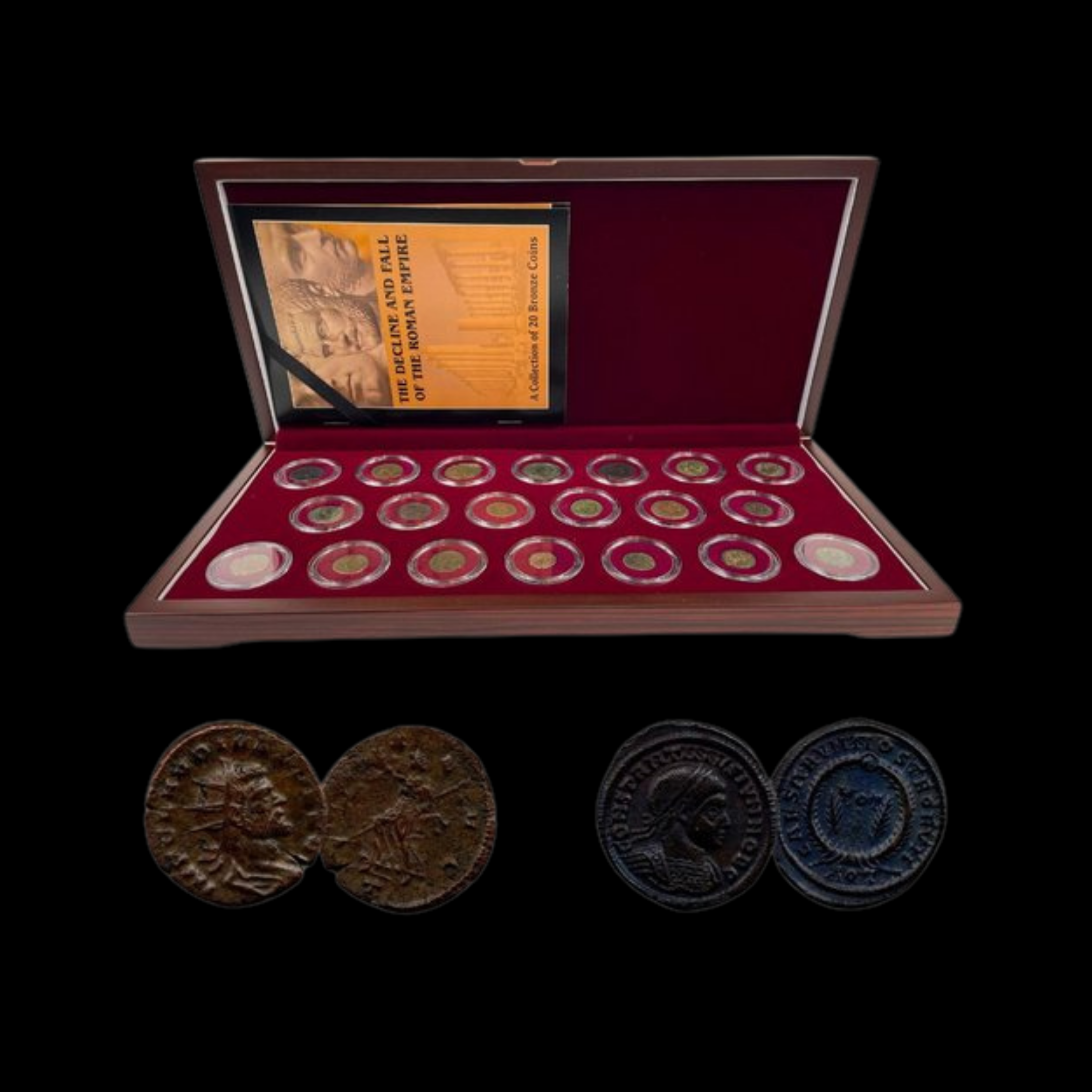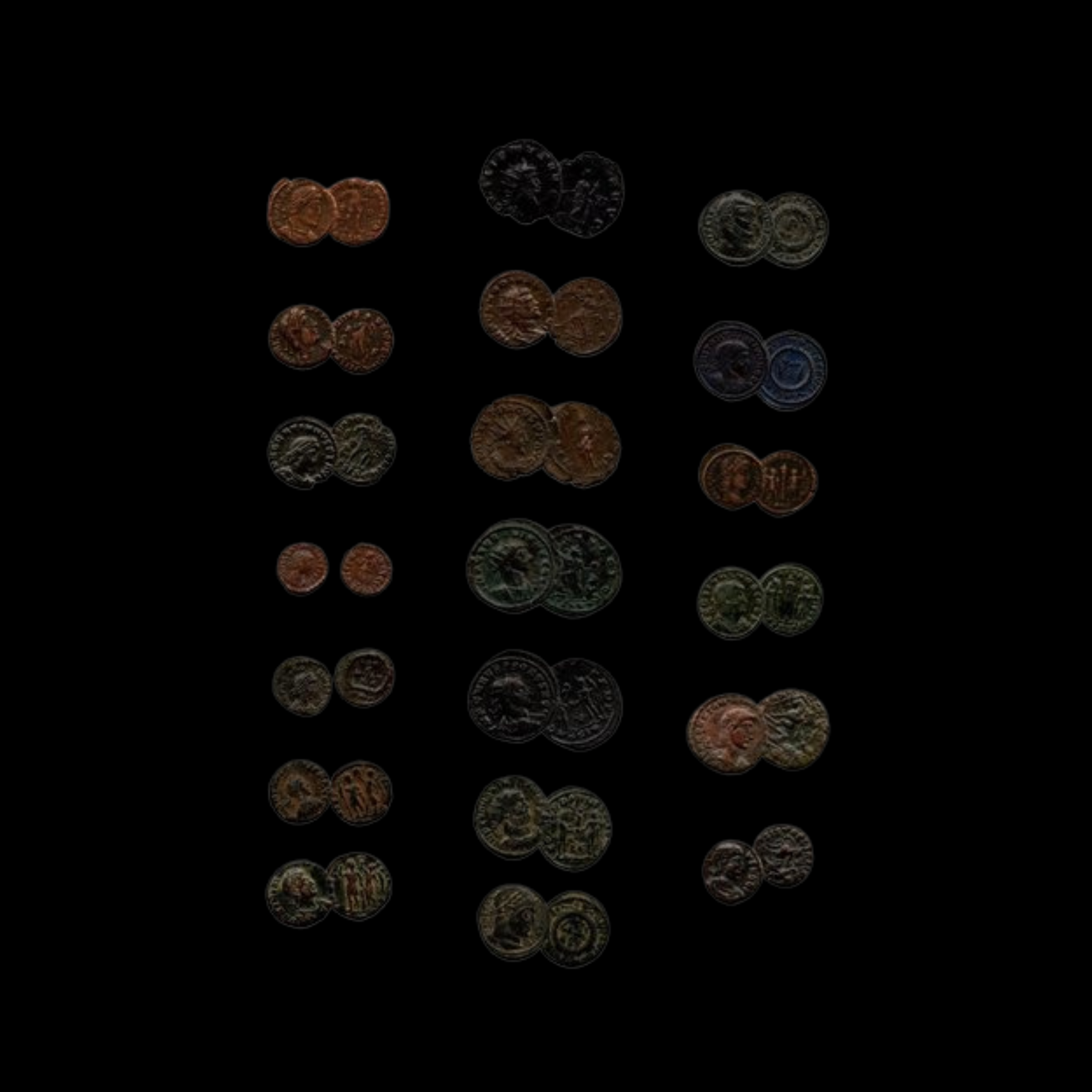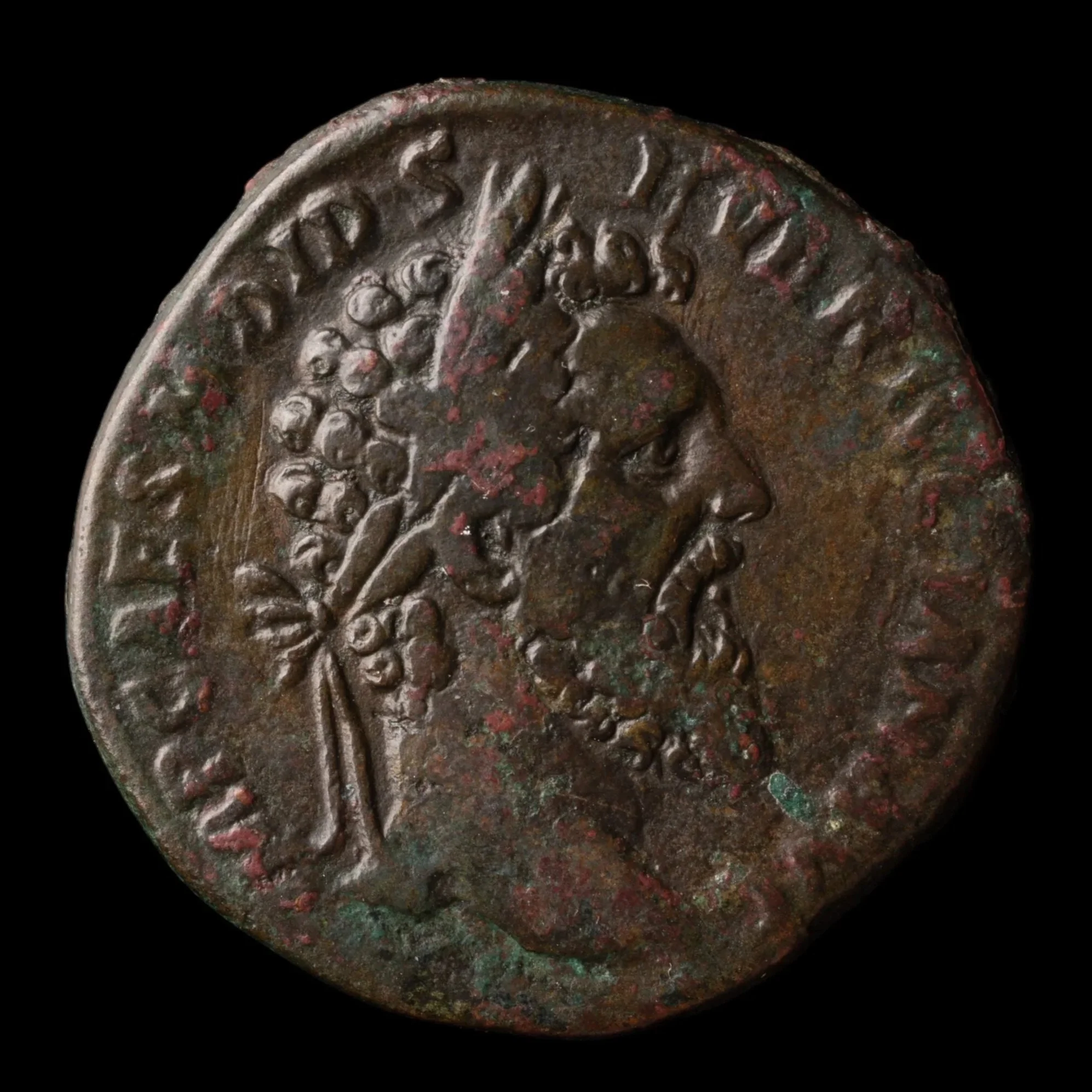 Image 1 of 6
Image 1 of 6

 Image 2 of 6
Image 2 of 6

 Image 3 of 6
Image 3 of 6

 Image 4 of 6
Image 4 of 6

 Image 5 of 6
Image 5 of 6

 Image 6 of 6
Image 6 of 6







Roman Bronze Coin of Emperor Maximinus II Daza (about 1,710-1,715 years ago)
The coins shown are representative examples of the grade and type, but not the actual specimens for sale. For details on NGC’s grading standards and definitions, please refer to our NGC Grading page.
This bronze coin represents the brief but significant reign of Maximinus II Daza, one of the last emperors to actively promote traditional Roman paganism against the rising influence of Christianity. Ruling primarily over the eastern provinces during a period of complex power-sharing arrangements, Maximinus participated in the final major persecution of Christians before Constantine's reforms changed the empire's religious landscape forever.
Coin Description:
Front side: Portrait of Emperor Maximinus II facing right, wearing either a laurel wreath or radiate crown, with Latin inscription stating his name and titles
Back side: Typically displays Roman deities (like Jupiter, Sol, or Mars), imperial virtues, or symbolic references to the emperor's supposed divine connection, with accompanying Latin text
Technical Details:
Bronze composition
Denomination: Follis or reduced follis (standard bronze coin of the period)
NGC certified, AE1/2 size designation (indicating a medium-sized bronze coin)
Minted between 311-313 AD
Condition as certified by NGC
Historical Significance: Maximinus II rose to power within Diocletian's Tetrarchy system, a governmental arrangement designed to prevent succession crises but which ultimately failed. First appointed as Caesar (junior emperor) in 305 AD, he declared himself Augustus (senior emperor) in 310/311 AD, controlling territories in Asia Minor and Egypt. A dedicated traditionalist, he intensified persecutions against Christians that had begun under Diocletian, issuing edicts that ordered sacrifices to Roman gods. His religious policies placed him in direct opposition to other emperors who favored tolerance. After being defeated by his rival Licinius at the Battle of Tzirallum in 313 AD, Maximinus fled to Tarsus (in modern Turkey) where he soon died, either by suicide or illness, bringing an end to systematic anti-Christian persecution in the Roman Empire.
The coins shown are representative examples of the grade and type, but not the actual specimens for sale. For details on NGC’s grading standards and definitions, please refer to our NGC Grading page.
This bronze coin represents the brief but significant reign of Maximinus II Daza, one of the last emperors to actively promote traditional Roman paganism against the rising influence of Christianity. Ruling primarily over the eastern provinces during a period of complex power-sharing arrangements, Maximinus participated in the final major persecution of Christians before Constantine's reforms changed the empire's religious landscape forever.
Coin Description:
Front side: Portrait of Emperor Maximinus II facing right, wearing either a laurel wreath or radiate crown, with Latin inscription stating his name and titles
Back side: Typically displays Roman deities (like Jupiter, Sol, or Mars), imperial virtues, or symbolic references to the emperor's supposed divine connection, with accompanying Latin text
Technical Details:
Bronze composition
Denomination: Follis or reduced follis (standard bronze coin of the period)
NGC certified, AE1/2 size designation (indicating a medium-sized bronze coin)
Minted between 311-313 AD
Condition as certified by NGC
Historical Significance: Maximinus II rose to power within Diocletian's Tetrarchy system, a governmental arrangement designed to prevent succession crises but which ultimately failed. First appointed as Caesar (junior emperor) in 305 AD, he declared himself Augustus (senior emperor) in 310/311 AD, controlling territories in Asia Minor and Egypt. A dedicated traditionalist, he intensified persecutions against Christians that had begun under Diocletian, issuing edicts that ordered sacrifices to Roman gods. His religious policies placed him in direct opposition to other emperors who favored tolerance. After being defeated by his rival Licinius at the Battle of Tzirallum in 313 AD, Maximinus fled to Tarsus (in modern Turkey) where he soon died, either by suicide or illness, bringing an end to systematic anti-Christian persecution in the Roman Empire.

















